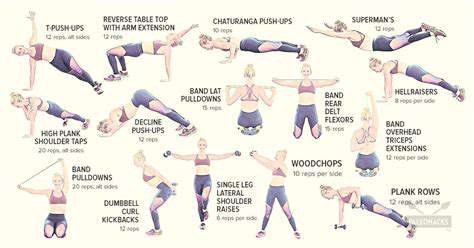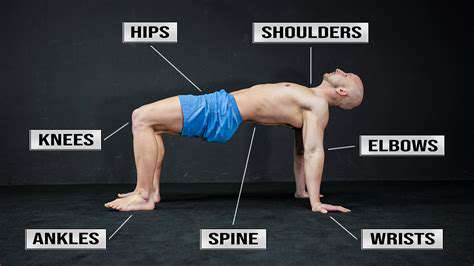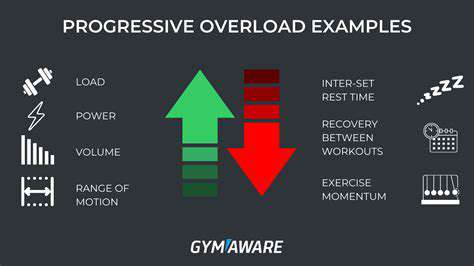Workouts Designed for Enhanced Arm Endurance
List of Contents
Arm endurance depends on muscles maintaining effort over time.
Slow-twitch fibers boost oxygen efficiency for lasting activities.
Training adaptations elevate mitochondrial numbers in muscle tissue.
Push-ups, pull-ups, and dumbbell moves build fatigue resistance.
Strategic eating habits amplify endurance training results.
Fluid balance directly impacts muscle function and repair.
Low-intensity movement accelerates metabolic waste removal.
Consistent measurement reveals endurance development patterns.
Compromised technique invites injury during repetitive motions.
Workout variation breaks through performance stagnation.
Understanding Arm Endurance
The Physiology of Sustained Arm Effort
True arm stamina stems from how muscles manage energy during extended use. Slow-twitch fibers act as the body's endurance engines, efficiently burning oxygen to fuel repetitive motions. These specialized cells explain why marathon swimmers maintain stroke consistency while others tire quickly.
Regular training triggers cellular upgrades - mitochondrial networks expand like power grids within muscle tissue. This adaptation allows athletes to work longer before lactic acid buildup occurs. For best results, blend resistance drills with cardio intervals that mimic real-world endurance demands.
Essential Movements for Lasting Power
Building tireless arms requires strategic exercise selection. Modified push-ups with staggered hand positions challenge stability while conserving energy. Rotating between wide-grip and close-grip pull-ups activates different muscle chains, preventing premature fatigue during climbing or paddling sports.
Resistance bands offer dynamic loading - try alternating between slow pulses and explosive bursts during bicep curls. This dual approach trains both endurance and power systems simultaneously. Always finish sets with 2-3 bonus reps using partial range of motion to push past plateaus.
Fueling Strategies for Prolonged Output
Nutrition timing makes or breaks endurance gains. Consume slow-digesting carbs like oats 90 minutes before training to maintain steady energy. During extended sessions, quick-carb sources like dates provide rapid fuel without stomach distress.
Post-workout recovery hinges on 3:1 carb-to-protein ratios - think sweet potato with grilled chicken. Electrolyte-rich fluids should be sipped hourly, not gulped post-exercise. Coconut water mixed with pinch of sea salt makes an ideal natural hydrator.
Smart Recovery Protocols
Active recovery isn't optional - it's the secret to consistency. Contrast therapy (alternating warm/cold arm immersions) boosts circulation better than static stretching alone. Try 3 minutes in 100°F water followed by 1 minute in 55°F, repeating 5 cycles.
Self-massage tools like knobbed rollers break up fascial adhesions that hinder performance. Focus on forearm flexors and triceps using 30-second pressure holds. Pair this with diaphragmatic breathing to enhance oxygen delivery to recovering tissues.
Progress Monitoring Techniques
Track more than just reps - measure time under tension using smartphone metronome apps. Gradually increase your work intervals from 45 seconds to 90 seconds per set over 6 weeks. Endurance athletes should prioritize session density (total work per hour) over max weights.
Create video logs comparing form fatigue - note when technique degrades during long sets. This reveals your current endurance threshold. Wearable tech helps track heart rate variability trends to optimize recovery between sessions.
Common Training Pitfalls
Many athletes sabotage progress through excessive frequency. Arms need 48-72 hours between endurance-focused sessions for full adaptation.  Overtraining manifests as decreased grip strength - test yourself weekly with dynamometer readings.
Overtraining manifests as decreased grip strength - test yourself weekly with dynamometer readings.
Another mistake? Static repetition schemes. Try escalating density workouts: perform max rounds of 10 push-ups/5 pull-ups in 15 minutes. Next week, beat your previous total by 10%. This auto-regulates intensity based on daily capacity.
Building an Arm Endurance Blueprint
Periodization Principles
Divide training into 3-week cycles: foundation (high reps), intensification (tempo focus), and realization (sport-specific drills). Advanced trainees benefit from micro-cycling - alternating heavy/light days within the same week.
Sample progression:
Week 1: 4x15 push-ups (2:0:1 tempo)
Week 2: 5x12 archer push-ups (3:1:2 tempo)
Week 3: 3xAMRAP (as many reps as possible) in 5 minutes
Cross-Training Synergies
Rock climbing develops grip endurance that transfers to pulling motions. Racket sports improve reactive arm stamina through unpredictable movement patterns. Even non-arm activities matter - strong core muscles reduce arm fatigue during overhead work.
Mind-Muscle Connection Drills
Practice tension control by holding light weights at various joint angles. For example, maintain 90-degree elbow bend with 5lb dumbbells while watching TV. This teaches energy conservation strategies crucial for endurance events.
Nutritional Optimization
Anti-Fatigue Nutrients
Magnesium-rich foods like pumpkin seeds help delay neuromuscular fatigue. Tart cherry juice reduces post-workout inflammation better than NSAIDs. Combine caffeine (3mg/kg) with beta-alanine (3-6g daily) for enhanced endurance capacity.
Hydration Hacks
Preload with 500ml electrolyte drink 2 hours pre-training. During sessions, sip 150-200ml every 15 minutes. Post-workout, weigh yourself and drink 1.5L per kg lost. Add mint leaves to water for improved palatability and digestion.
Advanced Tracking Methods
Biometric Feedback Loops
Use EMG sensors to monitor muscle activation patterns during endurance sets. Wearable tech now measures localized oxygen levels in working muscles - crucial for pacing strategies in competition settings.
Psychological Endurance Markers
Track perceived durability scores on 1-10 scale post-workout. Compare with physical metrics to identify mental blocks. Visualization training - imagining completing extra reps - can boost actual performance by 12-15% according to recent studies.




